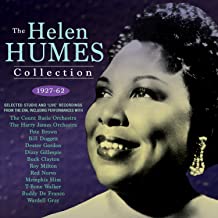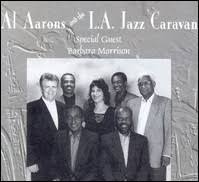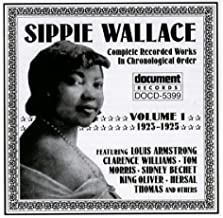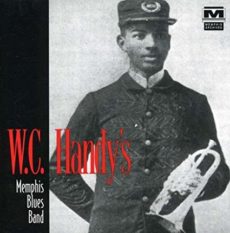
Daily Dose Of Jazz…
William Crickett Smith was born on February 8, 1881 in Emporia, Kansas, the child of Tennessee Exodusters. His professional career began in childhood, performing in Nathaniel Clark Smith’s Picaninny Band before moving into minstrel troupes, vaudeville and cabaret.
In 1913-1914, he made several early recordings with James Reese Europe’s group, the Clef Club Society Orchestra. Between 1914 and 1919, he performed in the Ford Dabney Orchestra, the resident band at Florenz Ziegfeld’s Broadway cabaret, Midnight Frolics. Between 1917-1919, they produced several dozen phonographs.
By 1919 Smith had relocated to Paris, France playing with Louis Mitchell’s Jazz Kings until 1924. The group recorded for Pathe Records. He became the leader of Mitchell’s group in 1923. He went on to tour France, Spain and Russia with his own bands from 1925 to 1933. However, during the Depression, he spent nine years in Southeast Asia, working with Herb Flemming, Leon Abbey, and Teddy Weatherford, mostly in Bombay and Batavia. In 1936, he recorded with a group called the Symphonians.
Around 1943 cornetist and trumpeter Crickett Smith, who played jazz blues and ragtime, returned to New York City and the following year transitioned on August 30, 1944.
More Posts: bandleader,cornet,history,instrumental,jazz,music,trumpet

Daily Dose Of Jazz…
Maurice James Simon was born March 26, 1929 in Houston, Texas. Studying the saxophone in high school he was a classmate of Eric Dolphy during the 1945-46 school year. He appeared on an early 1945 Los Angeles, California recording led by Russell Jacquet along with Teddy Edwards, Charles Mingus, Bill Davis and Chico Hamilton.
1948 saw him again with Jacquet as leader, in an all-star band recording in Detroit, Michigan along with Sonny Stitt, Leo Parker, Sir Charles Thompson, Al Lucas and Shadow Wilson.
He went on to join the Gerald Wilson Orchestra that also had Snooky Young, Red Kelly and Melba Liston as members. In 1950 he recorded for Savoy Records backing Helen Humes in a big band with Dexter Gordon, Ernie Freeman, Red Callender and J.C. Heard.
He also played with Fats Domino, Papa John Creach, Big Maybelle, Faye Adams, Bumble Bee Slim, Percy Mayfield and B. B. King. In the 1970s he worked with the Duke Ellington orchestra. Baritone and tenor saxophonist Maurice Simon passed away on August 6, 2019.
More Posts: hisotry,instrumental,jazz,music,saxophone

Daily Dose Of Jazz…
Albert Aarons was born in Pittsburgh, Pennsylvania on March 23, 1932 and graduated from Wayne State University in Detroit, Michigan. He began to gain attention as a trumpeter by 1956 and started working with saxophonist Yusef Lateef and pianist Barry Harris in the latter part of that decade in Detroit.
After a period playing with jazz organist Wild Bill Davis, he played trumpet in the Count Basie Orchestra from 1961 to 1969. The 1970s saw Aarons working as a sideman for singers Sarah Vaughan and Ella Fitzgerald, and saxophonist Gene Ammons.
Contributing to jazz fusion, playing on School Days with Stanley Clarke, he appeared with Snooky Young on the classic 1976 album Bobby Bland and B. B. King Together Again…Live. Trumpeter Al Aarons passed away on November 17, 2015 at age 83 in Laguna Woods, California.

Daily Dose Of Jazz…
Sippie Wallace was born Beulah Belle Thomas on November 1, 1898 in Plum Bayou, Jefferson County, Arkansas, one of thirteen children. Coming from a musical family, two of her brothers and a niece had prolific music careers. As a child, her family moved to Houston, Texas, and growing up she sang and played the piano in Shiloh Baptist Church but at night she and her siblings would sneak out to tent shows. By her mid-teens, they were playing in those tent shows, performing in various Texas shows, building a solid following as a spirited blues singer.
Along with her brother Hersal, Wallace moved to New Orleans, Louisiana in 1915 and two years later she married Matt Wallace and took his surname. She followed her brothers to Chicago, Illinois in 1923 and worked her way into the city’s bustling jazz scene. Hersal died three years later, but her reputation led to a recording contract with Okeh Records that same year with her first recorded songs, Shorty George and Up the Country Blues, sold well enough to make her a blues star in the early 1920s. Moving to Detroit, Michigan in 1929, she would lose her husband and her brother George in 1936.
For some 40 years, Sippie sang and played the organ at the Leland Baptist Church in Detroit. From 1945 she basically retired from music until launching a comeback in 1966, recording an album, Women Be Wise, on October 31st in Copenhagen, Denmark, with Roosevelt Sykes and Little Brother Montgomery playing the piano. Over the course of her career, she worked with Louis Armstrong, Johnny Dodds, Sidney Bechet, King Oliver, and Clarence Williams.
Singer, songwriter, pianist, and organist Sippie Wallace, who was nominated for a Grammy Award in 1982 and was posthumously inducted into the Michigan Women’s Hall of Fame in 1993, passed away at Sinai Hospital in Detroit, Michigan from complications of a severe stroke suffered post~concert in Germany on November 1, 1986. She was 88.
More Posts: history,instrumental,jazz,music,organ,piano,songwriter,vocal

Daily Dose Of Jazz…
William Christopher Handy was born on November 16, 1873 in a log cabin built by his grandfather in Florence, Alabama. Because his father believed musical instruments were tools of the devil, he purchased his first guitar without his parents’ permission, that he secretly saved for by picking berries and nuts and making lye soap. Upon seeing the guitar his father ordered him to return it, but also arranged short-lived organ lessons, moving on to learn to play the cornet. Secretly he joined a local band, purchased a cornet from a fellow band member and spent every free minute practicing it.
After working for a time on a “shovel brigade” at the McNabb furnace, in 1892 Handy travelled to Birmingham, Alabama, passed a teaching exam and began teaching. Finding the compensation too little, he quit, got a job in a pipe plant, put together a small string orchestra and taught musicians how to read music. He later organized the Lauzetta Quartet, ventured to St. Louis, Missouri and founding working conditions deplorable, so they disbanded.
Handy would go on to Evansville, Indiana, play the cornet in the Chicago World’s Fair in 1893, join a successful band that performed throughout the neighboring cities and states and worked as a first tenor vocalist in a minstrel show, a band director, choral director, cornetist and trumpeter.
At the age of 23, he was the bandmaster of Mahara’s Colored Minstrels and over a three-year tour, they toured to Chicago, throughout Texas, Oklahoma, Tennessee, Georgia, Florida, Cuba and Alabama at the end. Weary of life on the road, he and his wife, Elizabeth, settled in his nearby hometown of Florence and he became a faculty member at Alabama and Mechanical University from 1900 to 1902.
W.C. traveled throughout Mississippi, listening to various styles of black popular music, and with his remarkable memory would recall and transcribe the music later. He rejoined the Mahara Minstrels, toured the Midwest and Pacific Northwest, and became the director of a black band in Clarksdale, Mississippi. By 1909 he and his band moved to Memphis, Tennessee, where the publication of his Memphis Blues sheet music introduced his style of 12-bar blues, credited as the inspiration for the foxtrot dance step. By the time he was 40, he had established his musical style, his popularity had greatly increased, he was a prolific composer and a successfully profitable music publisher.
He founded the Handy Record Company, gained widespread popularity with the Bessie Smith recording of his Saint Louis Blues with Louis Armstrong, published several books including an autobiography and went blind after a fall from a subway platform. He later suffered a stroke and on March 28, 1958, W. C. Handy, The Father of the Blues, passed away from bronchial pneumonia at Sydenham Hospital in New York City.
More Posts: cornet





